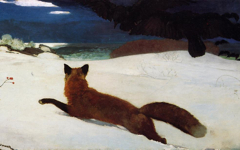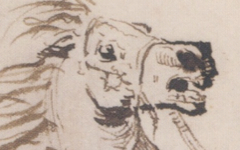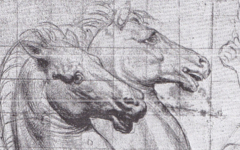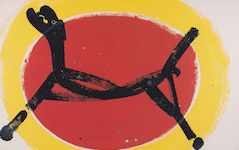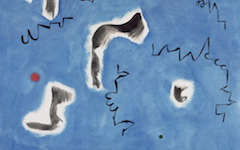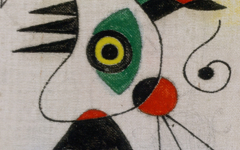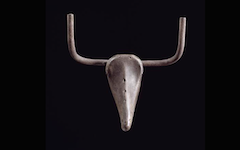Artist as Animal
The Portrait Galleries on this website reveal with numerous examples that artists often use other people as their alter ego. However, their self-identification with other characters is not restricted to human beings as the entries under this Theme show. Many artists, from the first shaman onwards, have identified with or represented themselves as dogs, cats, monkeys, horses and even dragons. Kafka became a cockroach. Artists feel at one with virtually everything in a painting. That iconic ox and donkey from The Nativitity, for instance, paired and watching every scene of Christ’s birth since the earliest centuries of Christian art, are not mentioned in the Gospels. Yet, as animal-observers, they are almost always an alter ego of the artist, in part because the ox is the attribute of St Luke, patron saint of painters.
Most Recent Articles
See what Manet recognized in Titian and how we can then learn it from Manet
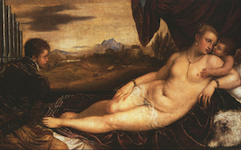
Titian’s Venus (c.1548-9) and Manet’s Olympia (1863)
All Articles (Alphabetical by Artist, then Title)
If you keep an eye out for underlying shapes, you might even be able to guess the artist's name

Antonio da Fabriano’s St Jerome in His Study (1451)
If it looks odd, there must be a reason. See Balthus horsing around.
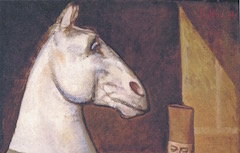
Balthus’ The Moroccan Rider with His Horse (1935)
How Bonnard turned his creative process into a scene in modern Paris
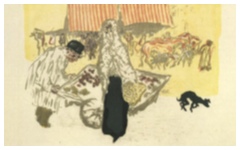
Bonnard’s The Pushcart (c.1897)
See how the second of a pair of paintings by Bosch is also "behind the eye."
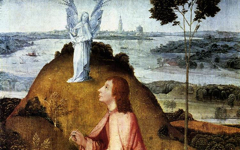
Bosch’s St. John on Patmos (1504-5)
Pastoral genre scenes, although invented by Boucher, abide by art's traditions
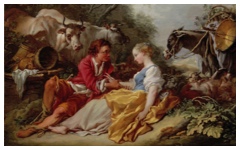
Boucher’s Pastoral landscape with a shepherd and shepherdess (c.1730)
Learn how additions to a painting's narrative often provide access to the composition's underlying meaning
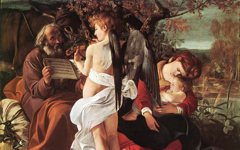
Caravaggio’s Rest on the Flight into Egypt (c.1597)
A long-mysterious image succumbs to interpretation if seen through a different paradigm
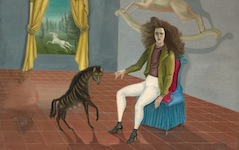
Carrington’s Self-portrait (c.1937-8)
Find out how Chagall made obvious what many other artists obscured

Chagall as an Animal (20th century)
Yet one more artist who sees himself as an animal, even as a creating animal

Cranach’s Animals in Adam and Eve’s (1509-1533)
See how artists continually think on another level beyond the narrative
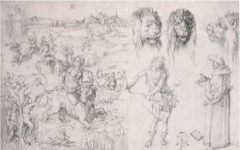
Dürer’s Rape of Europa and Other Studies (1494-5)
Learn how artists identified with other animals, even in the Renaissance.
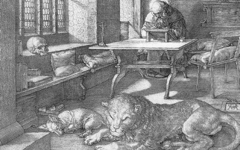
Dürer’s St. Jerome in his Study (1514)
Find out how inconsistencies in an artist's technique can be the sign of significant meaning
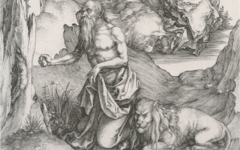
Dürer’s St. Jerome in the Wilderness (1496)
Veiled images are hidden in even the most simple and natural-looking sketches

Degas’ Galloping Horse (n.d.)
See what Degas makes of a Delacroix and thus, perhaps, what you should too....

Degas’ Study of Delacroix’s Entry of the Crusaders into Constantinople (c.1860)
Learn how to recognize the pointing pose of an artist and to confirm it through a play on words
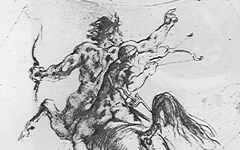
Delacroix’s Education of Achilles (c.1845)
When Delacroix was at last given large public rooms to decorate, he turned to Michelangelo and the Sistine Chapel

Delacroix’s Justice in Palais Bourbon (1833-7)
See animal. Think artist. Especially with a knowing look and a furry paw.
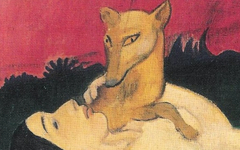
Gauguin’s Loss of Virginity (1890-1)
With Mercury outfitted as a painter, the viewer can interpret this image confident that the subject is art
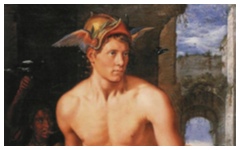
Goltzius’ Mercury (1611-13)
How an artist, the artist's lover, is Ingres' own androgynous reflection
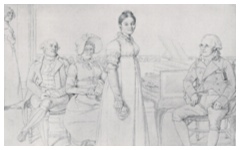
Ingres’ The Forestier Family (1806)
The universal features of Frida Kahlo's art are what links her to the canon, not the details of her private life
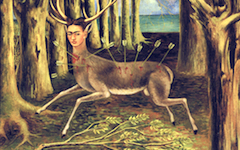
Kahlo’s The Wounded Deer (1946)
Catching a glimpse of the divine or true good in our own being can be the start of a spiritual transformation as Lotto shows
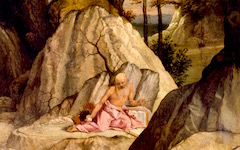
Lotto’s St. Jerome (c.1506)
Find out how the viewer in this garden scene is really inside Manet's mind
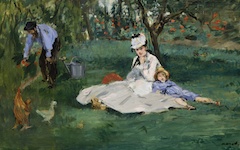
Manet’s Monet Family in the Garden (1874)
Unless there are dogs or cats in the picture, we tend to look at the humans more than the animals. Don't. Artists are often animals.
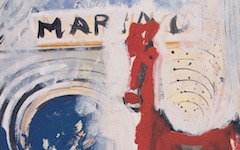
Marino Marini’s Poster for an Exhibition (1959)
Peale's American portraits have more in common with great European art than is generally accepted.

Peale’s Portrait of George Washington (c.1780)
Two protagonists in one painting must both represent the artist. It's a given in art so it's your job to find out how.

Picasso’s Cat Catching a Bird (1939)
Learn about the mystery behind Picasso's name and the importance of artist's names in general
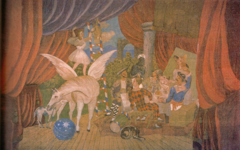
Picasso’s Parade (1917) and His Mysterious Name
If you didn't know that EPPH, you would never understand this image….nor would anyone else.
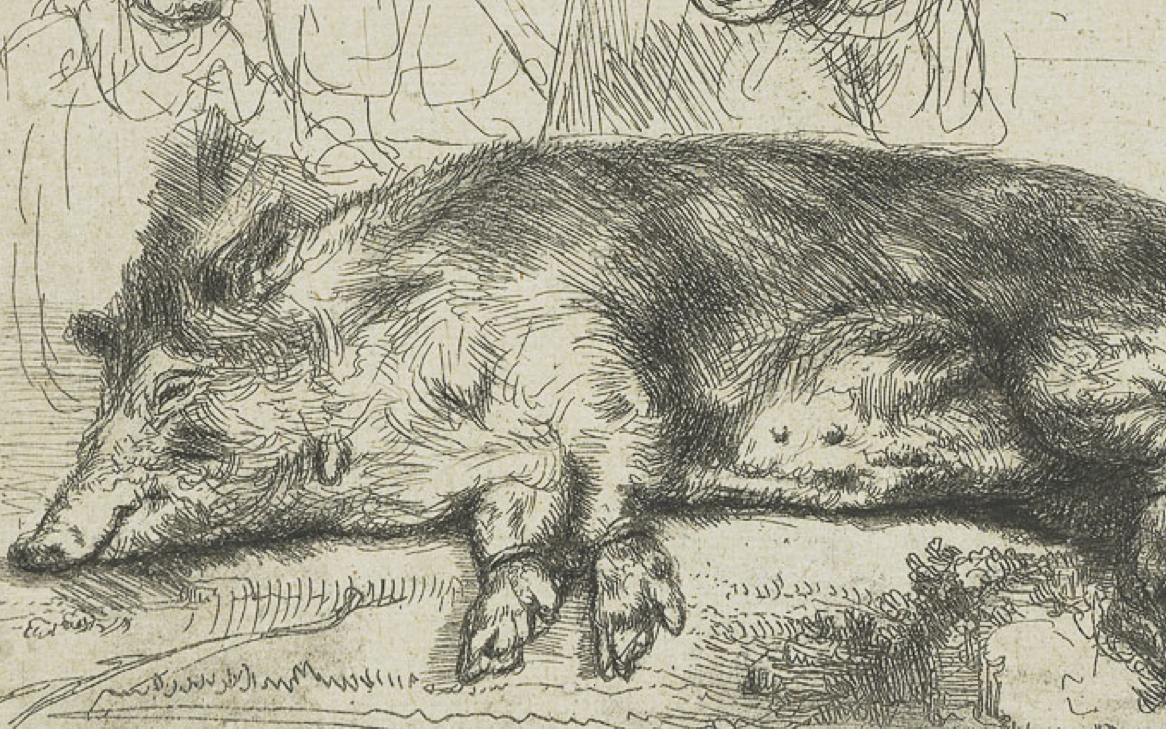
Rembrandt’s The Hog (1643)
In the lower right corner of Martin Schongauer's Adoration of the Magi is an innappropriate detail unrelated to the story of the Magi, a dog clawing at the ground. Why is it there and what could it mean?

Schongauer’s Adoration of the Magi
In Martin Schongauer’s woodcut of St. George and the Dragon, the monster is an alter ego of the artist. Or, at least he represents an aspect of the artist’s mind.

Schongauer’s St. George and the Dragon (c.1480)
Keep an eye out for the animals in religious scenes
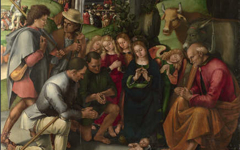
Signorelli’s Adoration of the Shepherds (c.1496)
See what Manet recognized in Titian and how we can then learn it from Manet

Titian’s Venus (c.1548-9) and Manet’s Olympia (1863)
Find out how saint, Virgin and ox are all the artist
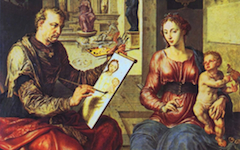
Van Heemskerck’s St. Luke Painting the Virgin and Child (1538-40)
Keep an eye on the "errors" in art and you will find the solutions
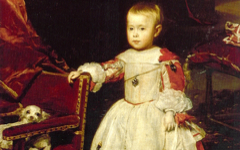
Velazquez’s Portrait of Infante Felipe Prospero (1659)
© Simon Abrahams. Articles on this site are the copyright of Simon Abrahams. To use copyrighted material in print or other media for purposes beyond 'fair use', you must obtain permission from the copyright owner. Websites may link to this page without permission (please do) but may not reproduce the material on their own site without crediting Simon Abrahams and EPPH.




